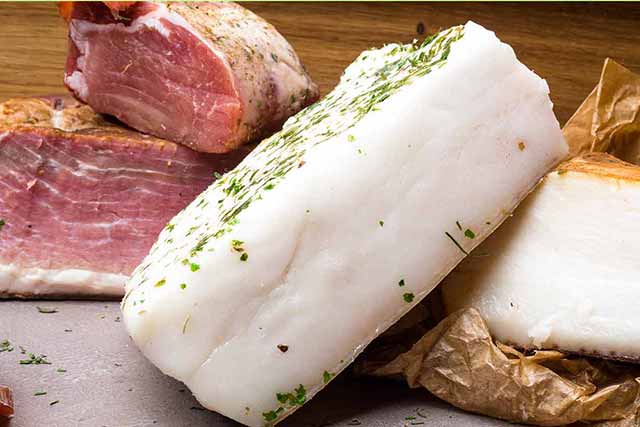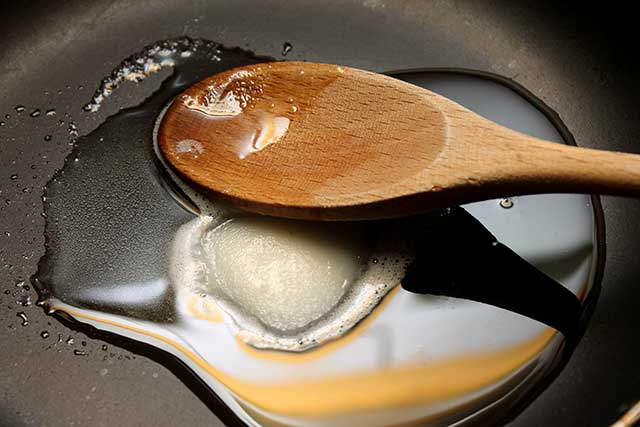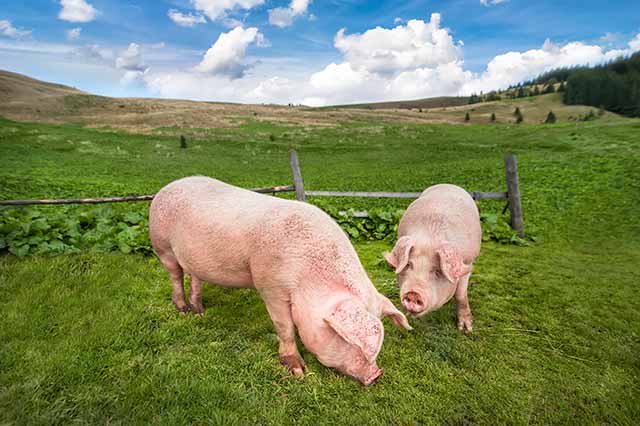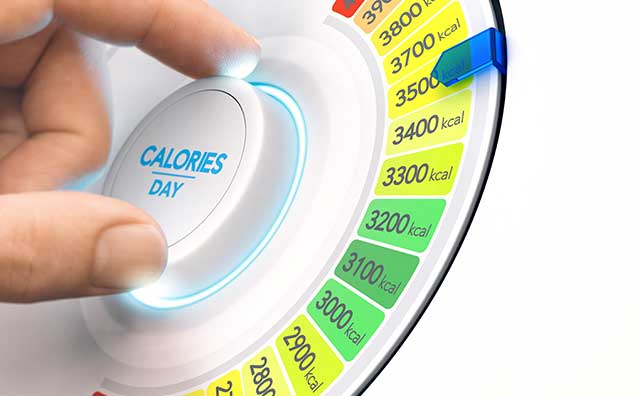Lard has a long history and it was once a staple cooking fat in kitchens around the world.
However, starting in the early 20th century, consumers progressively turned to trans fats and vegetable oils following public health concerns over animal fat.
In recent years, research has shown that animal fats are not the dietary demon they were made out to be.
As a result, lard has seen a resurgence over the past few years.
But is lard a healthy choice? This article examines the benefits and drawbacks of cooking with this traditional cooking fat.
What Is Lard?
Put simply; lard is fat that comes from a pig.
This fat is usually rendered to remove any impurities, and the resulting lard looks like a pure white brick in appearance.
In the past, lard used to be one of the most popular choices of cooking fat.
However, it lost its place in the kitchen to artificial trans fats such as Crisco, which were (wrongly) pushed as healthier alternatives.
Lard is a very versatile fat, and it is an excellent option for frying, deep-frying, and even baking.
Nutrition Facts
Here is the full nutrition profile for lard per tablespoon (13 grams) (1).
| Calories/Nutrient | Per 1 tbsp |
|---|---|
| Calories | 115 kcal |
| Carbohydrate | 0 g |
| Fat | 12.8 g |
| Saturated Fat | 5.0 g |
| Monounsaturated Fat | 5.8 g |
| Polyunsaturated Fat | 1.4 g |
| Omega-3 | 128 mg |
| Omega-6 | 1300 mg |
| Protein | 0 g |
As shown in the table, lard is an isolated fat which is primarily a source of unsaturated fatty acids.
Fatty Acid Ratio
- Saturated Fat: 41%
- Monounsaturated Fat: 47.5%
- Polyunsaturated Fat: 11.5%
Vitamins and Minerals
Lard is not a significant source of vitamins or minerals.
However, lard from pigs raised on pasture can be high in fat-soluble vitamins D and K2.
There is more information on this later.
Is Frying With Lard Healthy?
While there are many strong opinions about animal fats, there are both benefits and drawbacks to consider.
First, let’s take a look at some of the advantages of using lard for cooking.
Benefits
The benefits of using lard come from its heat-stability, versatility, and nutrition properties.
1) Heat-Stable For Cooking
First of all, lard is very heat-stable, so it is more suitable for frying than common vegetable oils.
For instance, one study compared the oxidative stability of lard to sunflower, rapeseed, and peanut oils. In this study, researchers heated each of the four fats to different temperatures between 25°C and 200°C.
The results showed that (2);
- Heated lard generated fewer harmful free radicals than the other oils.
- Lard was less prone to oxidative degradation, likely due to its low levels of linoleic acid (omega-6).
- The peroxide value, which indicates oxidation products, didn’t start to rise in lard until temperatures over 150°C, and it rose slowly. On the other hand, the peroxide values for the vegetable oils rose rapidly after only 3 minutes.
- Only lard showed a slow increase in oxidation products at temperatures over 200°C, and the other oils all showed rapid breakdown and oxidation.
Lard only contains approximately 11% polyunsaturated fatty acids, which are the most heat-sensitive (and prone to oxidation) types of fat (3).
Lard is not alone in this regard, and other animal fats such as tallow (beef fat) and goose fat are equally heat-stable.
2) Affordability
It would be nice if everyone could use those flavorful award-winning olive oils, but they can’t because the price is often prohibitive.
On the positive side, the price shouldn’t be an issue with lard; it is very cheap.
If you want to save even more money, it is usually cheaper to request some lard from a local butcher.
For the cheapest option, it is also possible to render your own lard at home.
3) May Provide Vitamin K2
It is difficult to get reliable figures for the amount of vitamin K2 (menaquinone) in animal foods since this greatly depends on how the animal was raised.
That said, foods from animals raised on fresh pasture tend to have a better nutrition profile.
Although it may be difficult to source, lard made from “free-range” pasture-raised pigs contains a good source of vitamin K2 (4, 5).
Vitamin K2 is much more bioavailable than vitamin K1 (mainly found in green vegetables), and it may have important cardiovascular benefits (6, 7).
4) A Good Source of Vitamin D3
Vitamin D3 occurs in pork, and it is most concentrated in pork fat.
As a result, lard is a significant source, and it contains a much higher proportion of vitamin D3 than various cuts of lean pork meat (8).
To be specific; a study found that there is “8 to 10 times more vitamin D-3” in lard compared to lean pork (9).
For the most substantial amounts of vitamin D, lard from outdoor reared pigs is the best option. Past research showed that pigs getting sun exposure had 9x the vitamin D3 content in their adipose (fat) tissue (10).
In other words, lard from pasture-raised pigs may offer nine times the vitamin D3 content of lard from conventionally raised pigs.
5) Lard Contains No Trans Fat Unlike Artificial Alternatives
Various artificial alternatives to animal fats like lard and tallow came into the market in the early 20th century.
The most famous of these was Crisco, which is renowned for being the first vegetable shortening (and a substantial source of trans fat).
At present, there are various vegetable shortening products on the market, and they all offer a similar texture and mouth-feel to lard in food.
Although they do not have as much trans fat as they did in the past, some of these products do still contain small amounts of these harmful fats. An easy way to identify the presence of trans fat is by checking the product label for an ingredient called ‘partially hydrogenated oil’.
Trans fat has an adverse effect on markers of cardiovascular risk, and it increases inflammation, raises LDL and triglyceride levels, and lowers HDL.
Additionally, systematic reviews show a clear link between trans fat intake and increased cardiovascular risk as well as all-cause mortality (11, 12).
Fortunately, lard offers the same taste experience as shortening products without containing any trans fatty acids.
Lard is also famous for the crisp and flaky texture it gives to bakery products like pastries and pie crusts.
6) Lard Has a Mild and Neutral Flavor
Sometimes we want to avoid strong, overbearing flavors in our food.
Although most people have no issue, others dislike the slight aftertaste that coconut and extra virgin olive oils can give to food.
On this note, lard has a very mild and neutral flavor, and it does not change anything about the way food tastes.
Furthermore, food cooked in lard tastes delicious.
Lard Health Concerns
As shown so far, there are some excellent reasons to use lard as a cooking fat.
However, there are also some concerns that people have about this animal fat.
1) Large Source of Calories, Not Nutrient-Dense
As an isolated source of fat, lard provides a large number of calories for very few nutrients.
Since just one tablespoon supplies 115 calories, it is easy to overdo it on lard (1).
That said, this is the case for every cooking fat and oil, and this is not something that is unique to lard.
The main point: isolated fats shouldn’t make up a significant proportion of our energy intake, and whole, nutrient-dense foods are the healthier option.
Using reasonable amounts of lard as a cooking fat? No problem.
2) Is the Saturated Fat In Lard a Problem?
Over the years, saturated fat has garnered a bad reputation as an “artery-clogging” fat.
However, recent high-level evidence has shown that saturated fat is not the artery-clogging danger as once thought.
For instance, recent systematic reviews of the existing evidence find no association between saturated fat intake and CVD or all-cause mortality (13, 14).
It is also worth pointing out that monounsaturated fatty acids, particularly oleic acid, are the main constituents of lard.
These are the same fats as found in olives and avocados.
3) Some Lard Is Hydrogenated For Shelf Stability
Lastly, it is important to realize that not all lard on store shelves is the same.
While some lard products are 100% pure rendered pork fat, others undergo a hydrogenation process to improve their shelf stability. These products usually have a few extra added ingredients too.
Firstly, fully hydrogenated animal fats are not the same as partially hydrogenated (trans) fat, and there is no good evidence to show that they cause harm.
These hydrogenated lard options are also cheaper with a longer shelf life.
However, it is understandable that some people may prefer to buy pure, fresh lard in its original state.
If this is the case, be aware of this point and remember to check the label carefully.
Common Uses For Lard
Some of the most typical uses for lard include;
- Deep-frying: Thanks to lard’s oxidative stability and affordable price point, it is a good choice for deep frying.
- Stir-frying: Lard is well-suited to cooking at high temperatures, and it is quite resistant to oxidation.
- Making pie crusts and other bakery products: lard is famous for giving pastry-style products a crisp and flaky texture.
- As a spread: some people like to use lard in the same way as they would use butter.
- Seasoning cast iron pans: it is a good choice for seasoning cast iron pans.
Final Thoughts
Lard is a traditional cooking fat that offers several benefits, great taste, and excellent versatility.
However, the most crucial aspect of any cooking fat is how it performs when exposed to high temperatures.
On a positive note, lard passes the heat-stability test, and it generates a much lower amount of oxidation products than most vegetable oils do.
Subsequently, lard is a healthy choice of fat for frying at high temperatures.
For more heat-stable cooking fats, see this review of red palm oil.





Why is cholesterol missing from the “full nutrition profile” of your article? Sounds half full to me.
Mentioning that lard “may” have vitamin K2 sounds like saying, cigarettes are a good source of health promoting oxygen. Only one diet has proven to not only prevent, but even reverse heart disease. Lard has no place in that diet.
Hi Carl,
Unfortunately, no diet has been proven to reverse heart disease, and this is widely recognized as a myth (although it is promoted in some vegan circles). If you are talking about Dean Ornish’s lifestyle reversal program from the 1980’s (that included diet, sleep, exercise, smoking cessation, and health mentoring) then this small study reversed arterial plaque in only 4 out of the 22 patients. Nor has this been replicated in diet-only trials despite many efforts since.
The nutrition profile didn’t include cholesterol (as most nutrition articles now don’t) because dietary cholesterol has little effect on blood cholesterol for most people. Since 2015, even the US dietary guidelines no longer recognize cholesterol as a “nutrient of concern”.
Lard is healthy if it’s from organicly raised animals
The fat in the body stores all the chemicals and wastes in the body
Maybe, but I’m not aware of any studies comparing organic and non-organic options. If you are aware of any, please let me know!